Do you have a question about the Ruckus Wireless ZoneFlex R500 and is the answer not in the manual?
Provides essential safety warnings and cautions for installing and handling Ruckus Wireless APs.
Lists additional Ruckus Wireless AP documentation resources like installation guides and release notes.
Provides instructions on how to submit comments and suggestions for improving the user guide.
Explains text and notice conventions used throughout the guide for clarity.
Introduces Ruckus Wireless APs, highlighting BeamFlex technology and deployment options.
Provides step-by-step instructions for unpacking the Ruckus Wireless AP and verifying package contents.
Details the physical features of the ZoneFlex 7055 AP, including front and rear panel components.
Describes the physical features and LEDs of the ZoneFlex 7321 AP.
Details the physical features and LEDs of the ZoneFlex 7341 AP.
Describes the physical features and LEDs of the ZoneFlex 7343 AP.
Details the physical features and LEDs of the ZoneFlex 7352 AP.
Describes the physical features and LEDs of the ZoneFlex 7363 AP.
Details the physical features and LEDs of the ZoneFlex 7372 AP.
Describes the physical features and LEDs of the ZoneFlex 7372-E AP.
Details the physical features and connectors of the ZoneFlex 7441 DAS AP.
Describes the physical features and LEDs of the ZoneFlex 7982 AP.
Introduces the ZoneFlex H500 AP, its features, and power options.
Details the physical features and LEDs of the ZoneFlex R300 AP.
Describes the physical features and LEDs of the ZoneFlex R500 AP.
Details the physical features and LEDs of the ZoneFlex R600 AP.
Describes the physical features and LEDs of the ZoneFlex R700 AP.
Introduces the ZoneFlex R710 AP, its features, USB port, and LACP capability.
Outlines pre-installation tasks including site survey and hardware preparation.
Guides through initial AP configuration for standalone or controller-managed operation.
Details how to verify AP functionality by connecting to the network and clients.
Explains how to place the AP in its final location and connect power and network.
Provides steps to resolve common installation issues, including factory reset.
Provides specific instructions for physically mounting the ZoneFlex 7055 AP.
Details installation procedures for the ZoneFlex 7441 DAS AP, including mounting options.
Refers to the Quick Setup Guide for physical installation instructions for the H500 AP.
Covers initial AP configuration steps and compatibility with Ruckus controllers.
Explains AP management via SCG, SZ, or vSZ controllers.
Details AP management through a ZoneDirector (ZD) controller.
Guides setting up the AP for standalone mode or FlexMaster (FM) management.
Describes the elements and layout of the Ruckus Wireless AP Web interface.
Highlights differences in the Web interface menu for dual-band APs.
Allows configuration of device name, location, and login credentials.
Defines how the AP connects to the local network and the Internet, including VLANs.
Enables routing and NAT functionality using the AP's Local Subnets feature.
Covers configuration of common wireless settings and individual WLAN settings.
Allows configuration of AP Ethernet port behavior, including trunking and VLANs.
Guides setting up Hotspot service, including redirect URLs and RADIUS server configuration.
Displays a general overview of the AP's current status and information.
Shows the AP's network settings, including IP, gateway, and DNS information.
Allows viewing router configurations and connected clients for local subnets.
Displays the current common wireless settings configured on the AP.
Helps monitor wireless clients associated with the AP.
Guides changing the default administrator username and password for security.
Covers enabling management access via HTTP, Telnet, SSH, and FlexMaster.
Explains how to view logs and configure the AP to send logs to a syslog server.
Provides methods for updating the AP firmware manually or automatically.
Details how to restart the AP using the Web interface.
Guides the process of restoring the AP to its original factory default settings.
Explains how to use built-in ping and traceroute tools for network diagnostics.
Directs users to the Ruckus Wireless Support Portal for additional resources.
Provides essential safety warnings and cautions for installing and handling Ruckus Wireless APs.
Lists additional Ruckus Wireless AP documentation resources like installation guides and release notes.
Provides instructions on how to submit comments and suggestions for improving the user guide.
Explains text and notice conventions used throughout the guide for clarity.
Introduces Ruckus Wireless APs, highlighting BeamFlex technology and deployment options.
Provides step-by-step instructions for unpacking the Ruckus Wireless AP and verifying package contents.
Details the physical features of the ZoneFlex 7055 AP, including front and rear panel components.
Describes the physical features and LEDs of the ZoneFlex 7321 AP.
Details the physical features and LEDs of the ZoneFlex 7341 AP.
Describes the physical features and LEDs of the ZoneFlex 7343 AP.
Details the physical features and LEDs of the ZoneFlex 7352 AP.
Describes the physical features and LEDs of the ZoneFlex 7363 AP.
Details the physical features and LEDs of the ZoneFlex 7372 AP.
Describes the physical features and LEDs of the ZoneFlex 7372-E AP.
Details the physical features and connectors of the ZoneFlex 7441 DAS AP.
Describes the physical features and LEDs of the ZoneFlex 7982 AP.
Introduces the ZoneFlex H500 AP, its features, and power options.
Details the physical features and LEDs of the ZoneFlex R300 AP.
Describes the physical features and LEDs of the ZoneFlex R500 AP.
Details the physical features and LEDs of the ZoneFlex R600 AP.
Describes the physical features and LEDs of the ZoneFlex R700 AP.
Introduces the ZoneFlex R710 AP, its features, USB port, and LACP capability.
Outlines pre-installation tasks including site survey and hardware preparation.
Guides through initial AP configuration for standalone or controller-managed operation.
Details how to verify AP functionality by connecting to the network and clients.
Explains how to place the AP in its final location and connect power and network.
Provides steps to resolve common installation issues, including factory reset.
Provides specific instructions for physically mounting the ZoneFlex 7055 AP.
Details installation procedures for the ZoneFlex 7441 DAS AP, including mounting options.
Refers to the Quick Setup Guide for physical installation instructions for the H500 AP.
Covers initial AP configuration steps and compatibility with Ruckus controllers.
Explains AP management via SCG, SZ, or vSZ controllers.
Details AP management through a ZoneDirector (ZD) controller.
Guides setting up the AP for standalone mode or FlexMaster (FM) management.
Describes the elements and layout of the Ruckus Wireless AP Web interface.
Highlights differences in the Web interface menu for dual-band APs.
Allows configuration of device name, location, and login credentials.
Defines how the AP connects to the local network and the Internet, including VLANs.
Enables routing and NAT functionality using the AP's Local Subnets feature.
Covers configuration of common wireless settings and individual WLAN settings.
Allows configuration of AP Ethernet port behavior, including trunking and VLANs.
Guides setting up Hotspot service, including redirect URLs and RADIUS server configuration.
Displays a general overview of the AP's current status and information.
Shows the AP's network settings, including IP, gateway, and DNS information.
Allows viewing router configurations and connected clients for local subnets.
Displays the current common wireless settings configured on the AP.
Helps monitor wireless clients associated with the AP.
Guides changing the default administrator username and password for security.
Covers enabling management access via HTTP, Telnet, SSH, and FlexMaster.
Explains how to view logs and configure the AP to send logs to a syslog server.
Provides methods for updating the AP firmware manually or automatically.
Details how to restart the AP using the Web interface.
Guides the process of restoring the AP to its original factory default settings.
Explains how to use built-in ping and traceroute tools for network diagnostics.
Directs users to the Ruckus Wireless Support Portal for additional resources.
| Output current | 1 A |
|---|---|
| Output voltage | 12 V |
| Power consumption (max) | 11.1 W |
| Power over Ethernet (PoE) | Yes |
| Power consumption (typical) | 6.13 W |
| Placement | Table, Wall |
| Product color | White |
| Cable lock slot type | Kensington |
| Operating temperature (T-T) | 0 - 50 °C |
| Operating relative humidity (H-H) | 10 - 95 % |
| Networking standards | IEEE 802.11a, IEEE 802.11ac, IEEE 802.11b, IEEE 802.11g, IEEE 802.11n |
| Ethernet LAN data rates | 10, 100, 1000 Mbit/s |
| Maximum data transfer rate | 1300 Mbit/s |
| USB 2.0 ports quantity | 0 |
| Ethernet LAN (RJ-45) ports | 2 |
| Security algorithms | WPA-PSK, WPA-TKIP, WPA2-AES |
| Antenna features | Integrated antenna |
| Width | 158 mm |
|---|---|
| Height | 40 mm |
| Weight | 350 g |
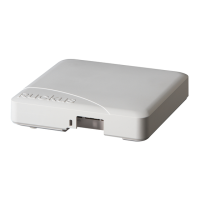

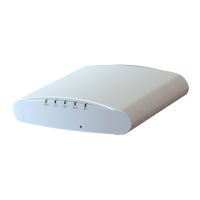
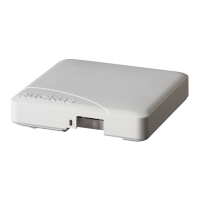


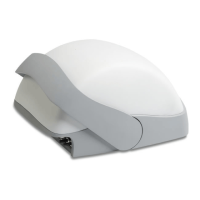
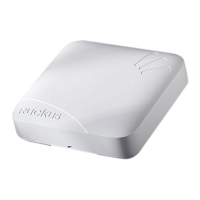


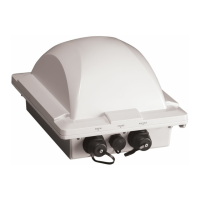
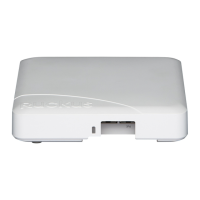
